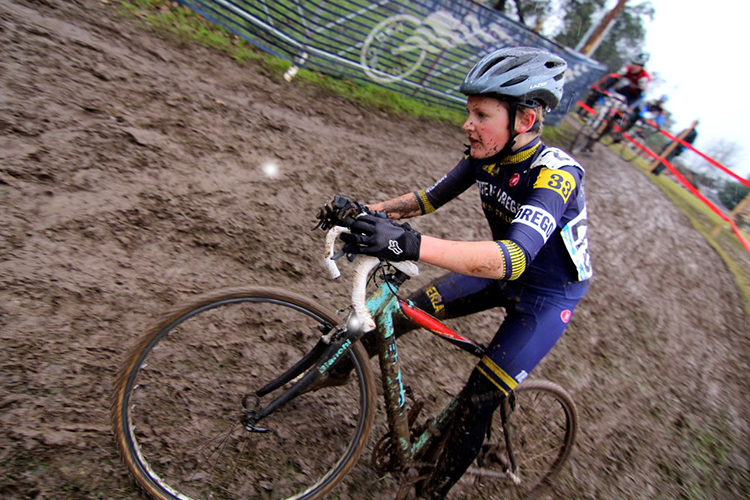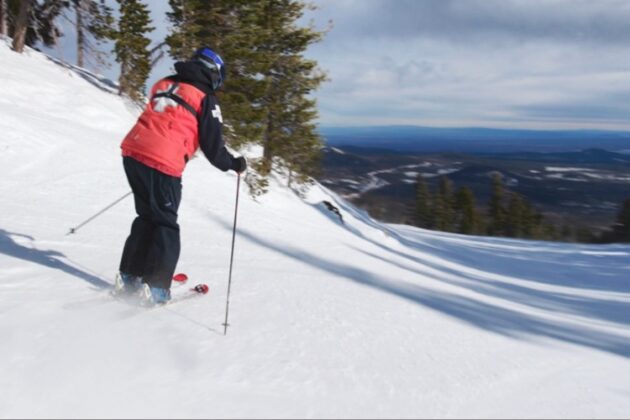
In 1976, a little known but quickly spreading phenomenon found its way west to Sunriver and has remained in Central Oregon ever since. Cyclocross was a primarily European sport that found wings here once locals had their first taste, and has only continued to grow in participants and spectators alike. Bend is now home to various seasonal races, clubs, and teams of participants.
The passion, intensity, and physical demand this sport requires of an individual no doubt leaves room for injury on many levels. The terrain is not a welcoming trail, following the river with an open view of Mt. Bachelor; but a dusty or muddy course accompanied by hills, obstacles and large amounts of competitive personalities all after the same thing – to cross the finish line intact. Cyclocross is to road biking as rugby is to football.
In an article on cyclocross injuries, as posted by Bicyclepaper.com, some key findings revealed that abrasion/contusion was the most common occurring injury. Knee pain was cited, as well as, ankle injuries and hand injuries.
Let’s face it, in most contact sports, abrasion/contusion is probably the highest occurring injury among all athletes. If you are a cyclist, this is not a new form of pain. Bend racer, Jen Luebke commented on the injury and safety aspect of each event: “Well last week I heard someone broke their ankle. I think that’s a rarity though. The main injuries are just some scratches and bruises. Because cross takes place mostly on dirt and grass at lower speeds there don’t seem to be crazy injuries. There’s always medical at the races because, guaranteed, with that many people on a course, someone will inevitably get injured. An added bonus is that it seems like a lot of people from the medical field like to race. That means there’s always a medical professional just a stone’s throw away.” Jen went on to discuss safety as far as the youngsters go: “I am sure parents primarily worry about the safety of their kids. Bend is amazing, though, because we have such good kids programs for cycling where safety is the number one. I have never been a part of any other city like it.”
As Cycling Director for the Bend Endurance Academy, Bill Warburton has been launching kid’s enthusiasm for biking over the past few years and revealed his wisdom on this quickly expanding pastime:
1. What age group do you think cyclocross is most popular in? Do you see more kids getting involved as the sport grows or is more something people get into after competing in say, cycling for a while? Cyclocross for adults is associated with rowdy crowds, parties at the team tents, and a celebratory atmosphere at the races, but it’s still family friendly, so we see lots of youth in the kid’s races and we’ve had over 100 juniors at some events. Adults can sometimes race more than once in a day, and races are short, so people often stay for quite a while to watch, cheer their friends in different categories, eat food, and drink beer.
2. What are the main injuries you see coming off a course? Luckily the crashes are usually on wet or soft surfaces and injuries are things like minor sprained ankles or wrists, but I’ve seen broken fingers, a few concussions, and a few cuts that needed some stitches.
3. What safety precautions are made for each race? It seems like people get pretty battered, but that is part of the glory right?! Officials do an inspection to make sure there’s nothing too crazy on course and medical staff is required to be on site for sanctioned races. Sometimes harder sections are reserved for only the elite categories, and courses are sometimes changed if organizers see something is causing a major safety concern. Sometimes we’re dealing with ice, snow, sticky mud, bridges, stairs, or other features that need to be constantly evaluated in changing weather or course conditions. No one wants to be injured, but suffering due to exertion is expected.
4. With shorter courses (just more laps) than traditional road biking, is there usually medical staff on standby or just a quick contact when necessary? Yes, medical is hardly more than a minute or two away and being in town allows for easier emergency transport planning. Plus, many of the racers are doctors and I’ve seen some incidents where there are half a dozen docs who respond to an injury from the sidelines, from within the race, and from the medical staff within a couple seconds — everyone watches out for each other for sure.
5. What are some of the big races people are excited for here in Bend this season? We had a great local Wednesday night training series in September, a double-header weekend of racing, and we’re looking forward to two more double-headers coming up at Halloween and at the start of December.
6. Is there a pretty legit training program for racers? Or just biking lots and being as fit as possible? Cyclocross allows people or all abilities and commitment levels to participate. Some train and hone their cross-specific skills all year, while others come in from road, mountain, or triathlon and do cross to be on a fun team with their friends. The beginner categories are always quite large and it’s arguably the most accessible discipline for bicycle racing.
7. What do you find are parent’s main concerns (if any) when their kiddos pick up the sport? Racing age is ten years old, so the youngest riders need help and guidance on everything from eating, drinking, and dressing properly – to how to ride enough but not too much. It’s a closed course, with no cars, usually easy to spectate, with a service area if they have mechanical problems, which makes it fairly easy to let kids try it out. Concerns are usually about finding a bike that fits, how to fit in their training with school and other sports, and deciding how much time and money they want to invest in the sport once their child decides they want to continue. Our junior team helps parents and kids through these stages and we have younger kids joining each fall.
8. How did you get involved in the pedaling sports? What keeps you coming back and wanting to get others involved? I’ve been a cyclist all my life because I grew up in the country and needed a way to get around to my friend’s houses. Then I started racing in high school. I love cycling and I love being able to guide riders through their formative years on a team with their peers because I didn’t have anything like that when I started racing. The cycling community is very supportive and I’m happy to be part of that effort to bring new riders into the sport in a way that will set them up to do it for life.
With so many young riders coming onto the track the advice from www.Outsidetimes.com becomes unequivocally relevant: Prevention is better than a cure. As more contenders come to the stage and compete in these races there are a few things to remember that can help prevent injury. Make sure the bike is fit correctly to the rider. Back pain can be avoided by simply having your bike set up correctly to avoid over reaching in the case of a frame being too large and hunched posture in the case of the frame being too small.
Taking the time to practice each movement executed on the course such as hopping on and off the bike, scrambling up hills (bike in tow), and carving tight turns, can also ward off painful symptoms. Never forget the basics such as warming up and stretching. Those age old words of wisdom still ring true.
Most importantly, as with any new, thrilling adventure, get out there and have fun! Enjoy the experience of cyclocross from the saddle of your mud spattered (correctly fit) bike or bundled up with a warm cup-a-joe and cowbell in hand while riders cruise by.





